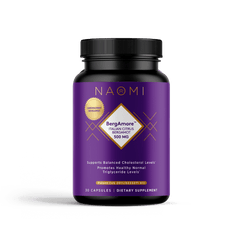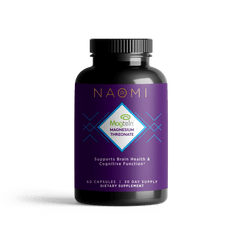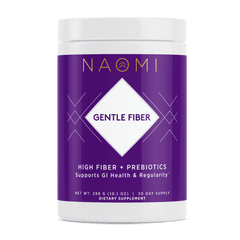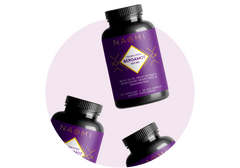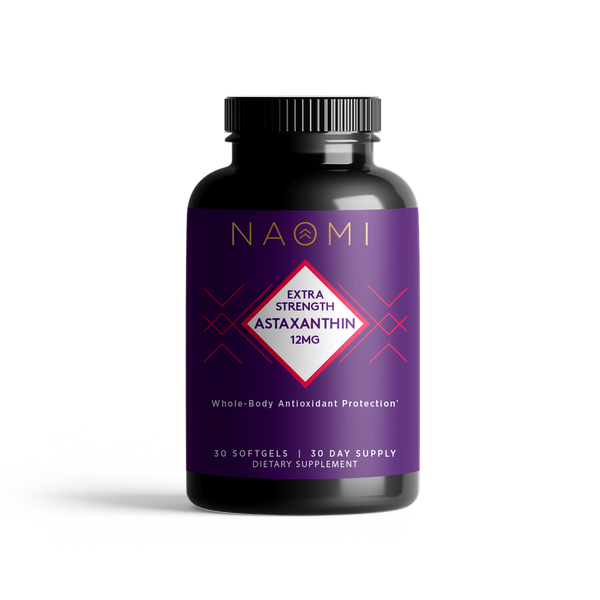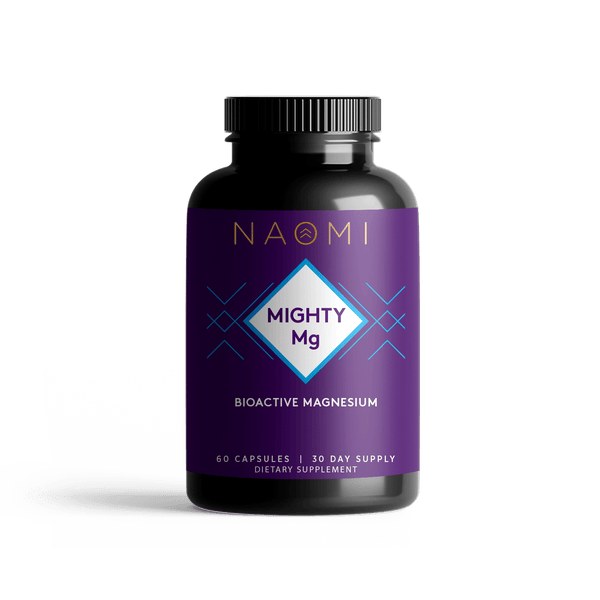6 Incredible Astaxanthin Benefits For Your Health
You’ve likely heard that vitamin C is a nutritional powerhouse because it’s a health-promoting antioxidant. But have you heard of how astaxanthin benefits your health?
I refer to astaxanthin (pronounced as-ta-zan-thin) as a “superstar antioxidant” because it’s actually 6,000 times stronger than vitamin C in terms of its antioxidant properties!
Known to support skin health, fight inflammation, and even boost energy, astaxanthin is found naturally in shrimp, krill, and salmon. But here’s the great news: You don’t have to eat a diet full of seafood to get the health benefits of this superstar!
If you’re ready to learn more about astaxanthin and all it has to offer, keep reading to learn how astaxanthin benefits your skin from the inside-out and does so much more.

What Is Astaxanthin?
I’ve always been amazed by how salmon have the strength to swim upstream over long distances in extreme conditions, and while I was on a trip in Dutch Harbor, Alaska, I learned that the answer lies in their favorite food—a special microalgae that contains astaxanthin.
But what, exactly, is astaxanthin? Astaxanthin is a pigment-based antioxidant known as a carotenoid—and it’s rightfully known as the “king of carotenoids”—found in plants, algae, and certain fish.
The microalgae that contain astaxanthin produce a deep red pigment as a way to defend against the sun’s harmful and drying rays. Interestingly, the benefits of the impressively powerful antioxidant are then passed on to the salmon, krill, and shrimp that feed on it. (Fun fact: Even flamingos get their bright pink hue from the astaxanthin found in the krill they feed on!)
Now, because we cannot produce carotenoids, we must obtain them through our diet. Accordingly, our natural sources of astaxanthin include:
- Algae
- Yeast
- Salmon
- Trout
- Krill
- Shrimp
- Crayfish
Wild-caught salmon has some of the highest concentrations of astaxanthin, with sockeye salmon having 26 to 38 mg of astaxanthin per kg. For reference, taking as little as 3.6 mg of astaxanthin per day has been found to provide some powerful health benefits.
So, let’s look a little closer at the many ways astaxanthin benefits your help as an incredibly powerful antioxidant.
6 Amazing Ways Astaxanthin Benefits Your Health
So, what does astaxanthin do for the body? Let’s take a look at some of the top health benefits of astaxanthin.
1. Fights free radicals
As a carotenoid, astaxanthin contains strong antioxidant properties, even showing to be 300 times stronger than lutein and lycopene and 550 times stronger than vitamin E. As a result, it is known to help cool inflammation—meaning it’s considered to be a free radical scavenger.
Because research has shown that astaxanthin helps to fight free radicals, it’s believed to help prevent oxidative stress, which results in subsequent inflammation and damage, such as accelerated aging and certain health conditions.
2. Supports skin health
One of the top benefits of astaxanthin is its ability to support skin health. Skin aging and skin damage is often a result of oxidative stress. As you age and are exposed to free radicals, your skin begins to look less full and lively, and wrinkles begin to form. This is due to damage and degradation to collagen and elastin from oxidative stress.
So, what does astaxanthin do for your skin? Astaxanthin benefits for skin are incredibly unique in that it fights free-radical damage that occurs from both internal and external factors.
Astaxanthin has been shown to contain strong antioxidant properties that reduce the evolution of oxidative stress in the skin, thereby supporting the protection of skin from UV exposure and helping to cool inflammation connected to certain skin disorders. In fact, studies have shown that astaxanthin is 100 times more effective than lutein and beta-carotene against the oxidative stress caused by UVA radiation.
Meanwhile, other research has shown that astaxanthin benefits skin appearance by reducing the appearance of wrinkles by supporting the synthesis of collagen while also supporting elasticity, skin texture, and even moisture content of the outermost layer of the epidermis (the corneocyte).
3. Supports brain health
The central nervous system is also highly susceptible to oxidative stress and inflammation due to its high metabolic rate and energy use. (Interesting fact: Your brain uses 25 percent of your body’s entire energy stores!) This creates opportunities for cellular breakdown and decreased ability to regulate any dysfunctional cell development.
When your body’s defenses are weakened by oxidative stress and inflammation, you’re at increased risk for neurodegenerative issue development. Carotene and astaxanthin benefits extend to brain health due to their inflammation-cooling and antioxidative effects. Additionally, astaxanthin has shown promise in animal studies by helping to cool inflammation in the hippocampus, thereby possibly reducing cognitive deficits.
An important thing to note is that astaxanthin benefits the brain directly because it can penetrate the protective blood-brain-barrier. Neurodegenerative problems are often more difficult to treat due to this protective barrier, which often prevents treatment from reaching the brain.
Additionally, astaxanthin benefits nerve cell regeneration, which is known to support central nervous system recovery after an injury. Astaxanthin does this by helping to increase gene expression of proteins that are involved in brain health and repair.
4. Promotes eye health
Research is showing promise that astaxanthin benefits for eyes are multifaceted. Consider this: The retina of the eye is extremely sensitive to UV radiation and this can lead to inflammation and oxidative damage over time. But several studies have investigated the ways astaxanthin benefits age-related retinal health due to its inflammation-cooling and antioxidant properties.
For example, some studies have shown that patients with advanced eye issues who were administered an astaxanthin and lutein/zeaxanthin combination for two years study found “significant improvement in visual acuity, construct sensitivity, and vision-related functions.”
But that’s not all! Research has also supported the idea that astaxanthin benefits eye strain and fatigue as well.
5. Supports cardiovascular health
Many studies have investigated how antioxidants can support cardiovascular health. But vitamins E and C along with beta-carotene have proven unsuccessful in reducing the severity of cardiac events. As a result, researchers have begun looking to more powerful antioxidants like astaxanthin.
Interestingly, studies are beginning to show that the benefits of astaxanthin may extend to heart health by supporting healthy cholesterol levels as well as triglyceride levels. Meanwhile, certain animal studies have shown that astaxanthin benefits may extend to supporting healthy blood pressure levels as well. The mechanism of action is thought to be through astaxanthin’s ability to help reduce nitric oxide end products.
6. Supports immune health
Finally, astaxanthin may deserve a spot in your health routine during cold and flu season due to its immune-modulating activity. Research has shown that this powerful antioxidant can influence key biomarkers associated with human immune responses and possibly even help intervene in the overproduction of potentially harmful cytokines.
The Best Astaxanthin Supplement
Astaxanthin is fat-soluble, meaning it is broken down by fat rather than water. As a result, an astaxanthin supplement is best absorbed when taken with fat or oil. Diets high in fat, such as the keto diet, allow for better absorption and bioavailability of astaxanthin than a low-fat diet.
Other ways to increase its bioavailability is to take an astaxanthin supplement with high fat foods such as chia seeds, flaxseed, fish oil, fish, or various nuts.
Astaxanthin is available in various formulations such as gels, capsules, creams, powders, oils, extracts, and even in energy drinks. But when looking for a quality astaxanthin supplement, make sure you are choosing a naturally-occurring form versus synthetic astaxanthin. Haematococcus pluvialis is the freshwater microalga that has the highest concentration of astaxanthin. Therefore, an astaxanthin supplement sourced directly from from Haematococcus pluvialis will have a much higher antioxidant potential than synthetic supplements, meaning it will provide greater potential benefits.
Currently, the recommended daily dosage of astaxanthin is 2 to 4 mg, but note that various dosing has been recommended for different concerns or goals such as brain health, cardiac health, and fighting inflammation.
To ensure that I am getting plenty of this potent antioxidant every day, I make sure to get a full research-based dose of astaxanthin as part of my daily wellness regimen.
NAOMI Astaxanthin features an extra-strength 12 mg dose of pure, organic astaxanthin to support the wide array of health benefits this powerful antioxidant has to offer.
Top Astaxanthin Foods
Consuming therapeutic doses of astaxanthin through food would be next to impossible, unless you plan to eat wild-caught salmon every single day! That’s why taking a quality astaxanthin supplement is so important. But don’t shy away from getting it through your diet when you can. Some of the top astaxanthin foods include: wild sockeye salmon, red trout, crab, shrimp and krill oil.
Wild-caught fish have higher levels of astaxanthin compared to farmed fish, and this distinction is usually identified on the packaging label. Also, when comparing wild and farmed salmon side-by-side, you’ll likely notice that the wild salmon has a brighter pink or orange color—a distinct nod to its higher levels.
If you’re looking to increase your astaxanthin through your diet, one of my favorite meals is wild salmon, with its bold flavor and healthy omega fats. For a delicious summer twist on including more salmon in your diet, try this Asparagus, Pea, and Broccoli Salad with Wild Salmon.
Astaxanthin Side Effects & Precautions
At this point, you may be wondering: What are the side effects of taking astaxanthin?
While more studies are needed to further discover the limits of astaxanthin benefits and side effects, early extensive research has found that astaxanthin is considered to be a safe and nontoxic substance and supplement—and that the benefits of astaxanthin for skin likely outweigh any potential side effects.
Because astaxanthin is best absorbed when consumed with a source of healthy fat, people often question astaxanthin side effects for the liver. But research has found that astaxanthin benefits the liver as well!
That said, as with most things, there are precautions that need to be taken when considering taking any new supplement. So, you should discuss adding any new supplements with your health practitioner first. And this is a good rule of thumb for anyone considering adapting their personal health plan.
In Summary:
-
Astaxanthin is a “superstar antioxidant” because it’s 6,000 times stronger than vitamin C in terms of its antioxidant properties!
-
Known to support skin health, fight inflammation, and even boost energy, astaxanthin is found naturally in shrimp, krill, and salmon.
- Unless you plan to eat wild-caught salmon every day, taking a high-quality astaxanthin supplement featuring a research-based full dose is the best way to consume this powerful antioxidant.

